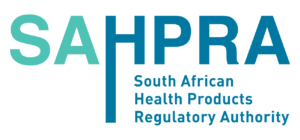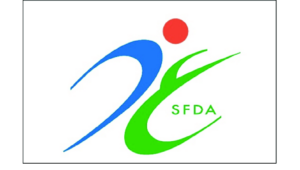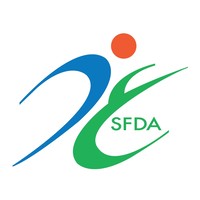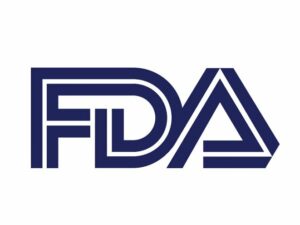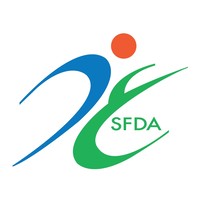The article addresses the aspects related to the applications for single medical devices and medical device families.

Table of Contents
Health Canada, the Canadian regulating authority for healthcare products, has published a guidance document dedicated to the approach to be applied when determining medical device application type.
The guidance provides an overview of the applicable regulatory requirements, as well as additional clarifications and recommendations to be taken into consideration by medical device manufacturers and other parties involved in order to ensure compliance with the existing regulatory framework.
At the same time, provisions of the guidance are non-binding in their legal nature, nor are they intended to introduce new rules or impose new obligations.
The authority also reserves the right to make changes to the guidance, should such changes be reasonably necessary to reflect corresponding amendments to the underlying legislation.
Terms and Definitions
First of all, the document provides definitions of the most important terms and concepts used in the context of medical device applications.
The relevant definitions are provided in the Medical Devices Regulations, however, they could be subject to certain changes for harmonization with the Principles of Labelling for Medical Devices and In Vitro Diagnostic (IVD) Medical Devices developed by the International Medical Devices Regulators Forum (IMDRF), a voluntary association of medical device manufacturers for further improvement of medical devices’ regulatory framework.
Terms and definitions described in the guidance include inter alia, the following ones:
- Device ID: the device identification number assigned by Health Canada (the authority also mentions that in certain cases multiple device identifiers could be assigned to a single medical device).
- Indication: a general description of the disease or condition the medical device or IVD medical device will diagnose, treat, prevent, cure, or mitigate (according to the guidance, this includes the detail on the intended patient population).
- Intended Use/ Purpose: the objective intent regarding the use of a product, process, or service as reflected in the specifications, instructions, and information provided by the manufacturer.
- Procedure Kit: a collection of medical devices, such as surgical instruments, dressings, or materials, that are packaged together for use in orange of surgical procedures in a particular clinical speciality.
- System: a medical device comprising components or parts intended to be used together to fulfil some or all of the device’s intended functions, and is sold under a single name.
- Test kit: an in vitro diagnostic device that consists of reagents or articles, or any combination of these, and is intended to be used to conduct a specific test.
Apart from the ones listed hereabove, the document also provides definitions for such terms and concepts as “manufacturer”, “medical device family”, “medical device group”, “medical device group family”, “off-the-shelf-component”, and “significant change”.
Concerning the latter, the guidance further elaborates on the scope of changes to be considered significant – according to the guidance, it will include the changes to:
- The manufacturing process, facility, or equipment
- The manufacturing quality control procedures, including the methods, tests, or procedures used to control the quality, purity, and sterility of the device or the materials used in its manufacture
- The design of the device, including its performance characteristics, principles of operation, and specifications of materials, energy source, software, or accessories
- The intended use of the device, including any new or extended use, any addition or deletion of a contra-indication for the device, and any change to the period used to establish its expiry date.
Single Medical Device Criteria
The document further outlines specific considerations related to single medical devices.
Under the general rule, every application for a medical device license or authorization should be dedicated to one device.
A license will cover one unique device ID and one device identifier.
However, it is important to mention that medical devices that differ only in their package sizes can still be unified under one license or authorization.
An illustrative example would be condoms available in packs of 8, 12, and 20.
The authority further explains that a medical device can be paired with generic components or accessories in a single license if these add-ons do not independently qualify as medical devices, for instance, hearing aids that come bundled with standard off-the-shelf batteries like AA batteries.
If a component is a standalone medical device, specifically developed or labeled to be used with a certain device, they should not be treated as a single entity.
Furthermore, if multiple components are physically combined at the point of sale and covered by a single device identifier, they are to be treated as one device.
Medical Device Family Criteria
The guidance also highlights the key points related to the regulatory status of medical device families.
According to the guidance, devices within a family are produced by the same manufacturer and only exhibit differences in attributes such as shape, color, size, or flavor.
They share the same design, manufacturing process, and purpose, even if brand names differ.
Certain devices within a family can act as standards for key testing, encapsulating the entire family’s range of specifications.
For instance, in a family of stents, representative devices might include models at extreme lengths and diameters, assuming all other facets remain identical.
Under the general rule, family devices should fall under the same Global Medical Device Nomenclature (GMDN) code.
As further explained by Health Canada, the main family device criteria is the uniformity in key materials used and the manufacturing process supported by sufficient evidence.
For instance, dental materials differing only in colour or sutures with identical chemical ingredients but varying percentages qualify as family members, while devices processed via distinct sterilization methods don’t.
Devices in a family should be covered by a singular primary intended use. Minor variances in indications are permissible as long as they do not deviate substantially.
Furthermore, family devices are typically supported by identical manufacturing process validation requirements.
In summary, the present guidance provides definitions of the key terms and concepts used in the context of medical device applications. The document also highlights specific aspects related to single medical device applications and medical device families.
How Can RegDesk Help?
RegDesk is a holistic Regulatory Information Management System that provides medical device and pharma companies with regulatory intelligence for over 120 markets worldwide. It can help you prepare and publish global applications, manage standards, run change assessments, and obtain real-time alerts on regulatory changes through a centralized platform. Our clients also have access to our network of over 4000 compliance experts worldwide to obtain verification on critical questions. Global expansion has never been this simple.
Want to know more about our solutions? Speak to a RegDesk Expert today!
–>
- SEO Powered Content & PR Distribution. Get Amplified Today.
- PlatoData.Network Vertical Generative Ai. Empower Yourself. Access Here.
- PlatoAiStream. Web3 Intelligence. Knowledge Amplified. Access Here.
- PlatoESG. Carbon, CleanTech, Energy, Environment, Solar, Waste Management. Access Here.
- PlatoHealth. Biotech and Clinical Trials Intelligence. Access Here.
- Source: https://www.regdesk.co/health-canada-guidance-on-medical-device-application-types-definitions-single-devices-and-families/
- :has
- :is
- :not
- 1
- 12
- 17
- 20
- 8
- a
- About
- access
- accessories
- According
- Act
- addition
- Additional
- addresses
- aids
- alerts
- All
- also
- amendments
- an
- and
- any
- applicable
- Application
- applications
- applied
- approach
- ARE
- article
- articles
- AS
- aspects
- assessments
- assigned
- Association
- At
- attributes
- authority
- authorization
- available
- batteries
- BE
- been
- brand
- bundled
- but
- by
- CAN
- Canada
- Canadian
- cases
- centralized
- certain
- change
- Changes
- characteristics
- chemical
- clients
- Clinical
- clinical trials
- code
- collection
- color
- combination
- combined
- come
- Companies
- compliance
- component
- components
- comprising
- concepts
- condition
- Conduct
- consideration
- considerations
- considered
- consists
- context
- control
- Corresponding
- could
- cover
- covered
- criteria
- critical
- cure
- Date
- dedicated
- definitions
- described
- description
- Design
- detail
- determining
- developed
- device
- Devices
- differ
- differences
- differing
- Disease
- distinct
- do
- document
- Dont
- energy
- ensure
- Entire
- entity
- equipment
- establish
- Even
- Every
- evidence
- example
- exhibit
- existing
- expansion
- expert
- experts
- expiry
- explained
- Explains
- extreme
- facets
- Facility
- Fall
- families
- family
- family members
- fda
- following
- For
- Framework
- from
- functions
- further
- General
- Global
- global expansion
- Group
- guidance
- Have
- Health
- healthcare
- hearing
- help
- highlights
- holistic
- However
- HTML
- HTTPS
- identical
- Identification
- identifier
- identifiers
- if
- important
- impose
- improvement
- in
- include
- includes
- Including
- independently
- indications
- information
- ingredients
- instance
- instructions
- instruments
- Intelligence
- intended
- intent
- into
- introduce
- involved
- IT
- ITS
- jpg
- Key
- Know
- labelling
- Legal
- Legislation
- License
- like
- Listed
- Long
- Main
- make
- manage
- management
- management system
- Manufacturer
- Manufacturers
- manufacturing
- Markets
- materials
- max-width
- medical
- medical device
- medical devices
- Members
- mention
- mentions
- methods
- might
- minor
- Mitigate
- models
- more
- most
- multiple
- name
- names
- Nature
- necessary
- network
- never
- New
- nor
- number
- objective
- obligations
- obtain
- of
- on
- ONE
- ones
- only
- operation
- or
- Orange
- order
- Other
- our
- outlines
- over
- overview
- package
- packaged
- Packs
- paired
- particular
- parties
- parts
- patient
- performance
- period
- Pharma
- Physically
- platform
- plato
- Plato Data Intelligence
- PlatoData
- Point
- point of sale
- points
- population
- Prepare
- present
- prevent
- primary
- principles
- procedures
- process
- processed
- Produced
- Product
- Products
- provided
- provides
- publish
- published
- purpose
- qualify
- quality
- Questions
- range
- real-time
- recommendations
- reflect
- reflected
- regarding
- regulating
- Regulation
- Regulators
- regulatory
- related
- relevant
- remain
- representative
- Requirements
- reserves
- right
- Rule
- rules
- Run
- sale
- same
- scope
- service
- Shape
- Share
- should
- significant
- Simple
- single
- singular
- Size
- sizes
- Software
- sold
- Solutions
- some
- Source
- speak
- specific
- specifically
- specifications
- Sponsored
- standalone
- standard
- standards
- Status
- Still
- subject
- substantially
- such
- sufficient
- SUMMARY
- Supported
- surgical
- system
- taken
- terms
- test
- Testing
- tests
- that
- The
- their
- These
- they
- this
- Through
- time
- to
- together
- treat
- treated
- trials
- Turkish
- type
- types
- typically
- under
- underlying
- unified
- unique
- use
- used
- validation
- varying
- Verification
- via
- voluntary
- want
- WELL
- when
- while
- will
- with
- within
- worldwide
- would
- you
- zephyrnet


